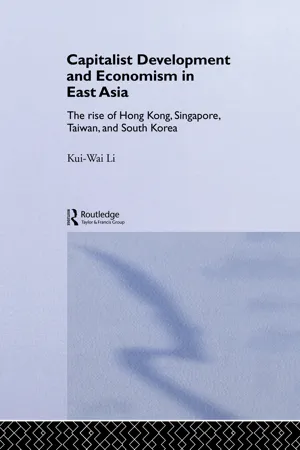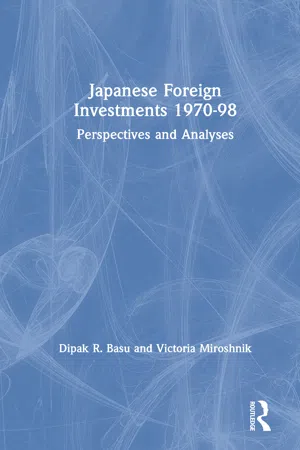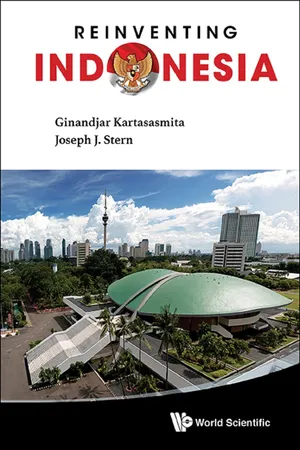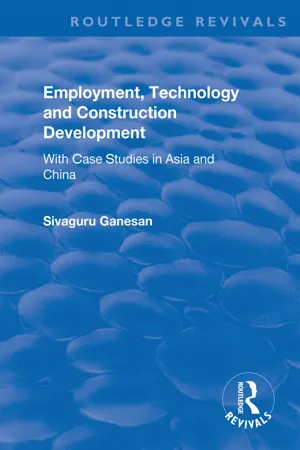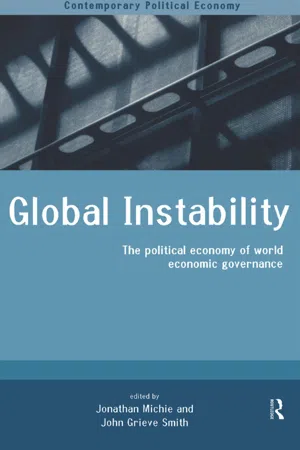Economics
1997 Asian Financial Crisis
The 1997 Asian Financial Crisis was a period of severe economic downturn that affected many Asian countries, including Thailand, South Korea, and Indonesia. It was triggered by a combination of factors such as currency devaluations, excessive foreign borrowing, and financial sector weaknesses. The crisis led to widespread economic and social turmoil, and its effects were felt globally.
Written by Perlego with AI-assistance
Related key terms
7 Key excerpts on "1997 Asian Financial Crisis"
- eBook - ePub
Financial Crisis, Contagion, and Containment
From Asia to Argentina
- Padma Desai(Author)
- 2014(Publication Date)
- Princeton University Press(Publisher)
5 The Asian Financial Crisis T HE ASIAN FINANCIAL crisis that originated in Thailand in the summer of 1997 caught everyone off guard by its unpredictability and scale as it spread in the neighborhood to Indonesia, Malaysia, and South Korea. It came as a shock because the affected economies had chalked up impressive private sector–led economic performance marked by high growth and low inflation rates, public sector balanced budgets, and economy-wide savings. Despite their evident strengths leading up to 1996, however, these economies displayed disturbing features, which I analyze in this chapter. I argue that the sudden and destabilizing reversals of short-term capital inflows, affecting their private banks that were weakly regulated and businesses that were tempted into risky investments, brought about the financial and currency turmoil that subsequently hit the Russian ruble in August 1998 and the Brazilian real in January 1999. The attribution of crisis origin to short-term capital flows raises several conceptual and methodological issues. The crisis-swept Asian countries (figure 5.1) were inadequately prepared in terms of their institutional underpinning and structural features to absorb short-term capital inflows to their advantage. (I discuss these features in block 1.) As emerging market economies integrating into the world financial system with varying speed, they continue sharing this disadvantage of inadequate preparedness with others in the periphery which borrow from the developed market economies at the center of the global capital markets. 1 The uneven playing field between the lending center and the borrowing periphery raises important policy issues of the manner and the speed with which the emerging market peripheral economies can be integrated in the international financial system - Kui-Wai Li(Author)
- 2003(Publication Date)
- Routledge(Publisher)
Section 8.2 elaborates on the two phases of the AFC. The first phase relates to the fundamental factors, while the other concerns the spillover from the economic difficulties facing the Japanese economy. Section 8.3 summarizes the two theoretical debates on the AFC, and concludes that the two theories are probably complementary to each other. Section 8.4 examines the AFC within the four East Asian economies. From a comparison of its economic performance with Taiwan, one can see that South Korea is faced with a problem of overcapacity, with excess industrial supply and low foreign demand. Section 8.5 extends the discussion of the AFC to three major implications for the economic development of Asia: trade and competitiveness, the emergence of mainland China, and the importance of the real economic sector. After considering the various dimensions of the AFC, it is argued that the paradigm of economism has not been affected. If anything, the AFC does highlight the need to maintain the essential “floor conditions” of the paradigm. This argument is presented in section 8.6.8.2 The Two Phases of the CrisisAlthough there are alternative explanations for the Asian financial crisis (AFC), which led to the downfall of a number of Asian economies between 1997 and 1998, there was a cluster of economic events in the 1990s, both internationally and in Asia, which could be considered to be the origin of the crisis. The crisis, which began in Mexico in 1994, soon spread to Argentina in 1995. Features that seemed peculiar to one region spread to another and generated a global phenomenon (see, for example, Meigs 1998). The Asian crisis that swept Thailand, Indonesia, Malaysia, and South Korea in 1997–98 was followed by a crisis in Russia in 1998–99. The official start of the AFC is thought of as 2 July 1997, when the Bank of Thailand floated the baht and raised the discount rate to 12.5%, and a team from the International Monetary Fund (IMF) arrived to help resolve the economic crisis. The crisis in Thailand is believed to have been caused by the twin forces of the property bubble bursting and currency speculation.1 In Malaysia, Bank Negara’s support of the ringgit on 2 July 1997 caused the foreign exchange reserve to drop by 12% and the value of the ringgit had fallen to a three-year low by mid-July. The currency crisis swept onward to different South-East Asian economies. Together with Indonesia’s rupiah, and the Philippines’ peso, Asian currencies all slumped as confidence in the region deteriorated. Both the currency and stock market index saw large percentage declines.2Table 8.1- eBook - ePub
Japanese Foreign Investments, 1970-98: Perspectives and Analyses
Perspectives and Analyses
- Dipak R. Basu, Victoria Miroshnik(Authors)
- 2019(Publication Date)
- Routledge(Publisher)
The Asian economic crisis started in the middle of 1997 when a large conglomerate in Korea defaulted and the stock market in Thailand started collapsing along with its currency. Very soon, one country after another was experiencing a combination of massive depreciations of their currencies, sharp downfall of stock prices, a flood of outflows in foreign investments, and bankruptcies of big and small companies. Within a year, the so-called “tiger” economies of East Asia were reduced to begging for economic assistance to survive, with their populations suffering from mass unemployment, social upheavals, and political disturbances not seen in this part of the world for decades. Japan was both a part of the problem nd the solution. Japan’s own economic recessions since 1991 have contributed to the problem and it is in a position more than any other country or even international financial organization to pave the way for a solution. We discuss here the issue and the actions taken by the Japanese government in some detail.Sharp depreciation of currencies have caused rise in the prices of imports, increased foreign debt in local currencies for the corporations and banks, and sharp increases in interest rates to prevent capital outflows. The result was a fall in consumption and investments and as a result deep economic downturns. The emergency financial policies adopted in those countries as suggested by the IMF led to contractions of consumption and investments as a result of reductions of public expenditures and money supplies. Financial and credit functions became paralyzed in some countries and the currency crisis became an economic crisis. A high degree of interdependency in both investments and trade formed during the high-speed economic growth caused the East Asian currencies to follow each other down. According to the Asian Development Bank, real economic growth in Southeast Asia in 1998 slowed to -6.9 percent, compared to 8.2 percent in 1995 and 7.1 percent in 1996, due to the effects of the Asian crisis. Inflation in the Southeast Asian region in 1998 was 21.0 percent as compared to 5.6 percent in 1997 and 6.6 percent in 1996.South Korea, Indonesia, Thailand, and Malaysia had negative growth in 1998.There are a number of reasons behind the crisis, both long-term and short-term. Inherent structural aspects of the crisis should not be ruled out. In order to maintain a high growth rate, private projects have received government guarantees, subsidies, and public finance. Public: industrial and financial policies were geared to enhance corporate profits. Costs and risks of industrial projects were overlooked as the prospects of public “bailout” was the rule for the corporate sector, which was highly connected through political and family ties to the government. It was obvious even in midl 990s that the profitability of new investments projects was low. In Korea, for example, twenty of the largest thirty conglomerates in 1996 reported negative rates of return on invested capital. In 1997, seven out of the largest thirty conglomerates in Korea were effectively bankrupt (OECD, 1998). However, both the growth of investments and capital flows remained high due to the fall in interest rates in major industrialized countries (interest rates in Japan were almost zero) and the corresponding higher interest rates in Asia. Lax supervision, weak regulations, corrupt practices due to nepotism, semimonopolistic relations between companies and their main banks, and absence of scrutiny from the stock markets due to overdependence of the corporate sector on banks rather than on the stock markets contributed to the growing nonperforming loans. These practices are also common in Japan, and as a result, the Japanese financial system was, until rescued by the government in 1999, buried under the mountain of nonperforming loans. Asian countries have liberalized their capital account of the balance of payments and relaxed restrictions of their financial markets. These have led to significant inflows of foreign institutional funds of a short-term nature, ignoring any possible risks of future defaults due to high economic growth financed by these inflows. This is a classic case of financial “pyramid” building, which can collapse if high economic growth cannot be sustained. By the end of 1996, the share of short-term liabilities in total liabilities was above 50 percent and the ratio of short-term external liabilities to foreign reserves was above 100 percent in Korea, Indonesia, and Thailand. - eBook - ePub
- Ginandjar Kartasasmita, Joseph J Stern(Authors)
- 2015(Publication Date)
- WSPC(Publisher)
Chapter 5The Crisis: 1997–1999
On 2 July 1997, the central bank of Thailand was forced to abandon its fixed exchange rate regime and allow the baht to float. It immediately depreciated by almost 20%, giving substance to informal reports of structural problems and weaknesses in the Thai economy. The depreciation of the baht fanned fears that even the rapidly growing East Asian economies were not immune to the type of economic collapse that took place in Latin America, and some analysts now began to wonder if the much heralded “Asian miracle” had been oversold. The crisis soon spread from Thailand to Malaysia, the Philippines, and then to Indonesia, where it would hit the hardest, and then to Korea and other countries. Quite suddenly the unbounded optimism about the East Asian economies was replaced by a deep skepticism about their health, the extent of corruption, and the lack of well-developed and well-managed financial and legal institutions. Fears that other Asian economies might now also collapse led to massive capital outflows from the region. Foreign banks that were once eager to lend to nearly any Asian investor suddenly refused to renew short-term credit lines.1The Malaysian ringgit came under attack on 5 July, and its central bank soon spent 12% of its foreign exchange reserves (roughly $4 billion) in a futile attempt to defend the currency, which depreciated by 4%.2 The Philippines was next to come under pressure, and on 11 July its central bank announced that it would no longer defend the peso. This decision led to a 12% loss in its value, forcing the central bank to move to a floating exchange rate regime.Korea, a member of the OECD, was the last East Asian country to fall victim to the financial crisis when it found itself unable to refinance short-term loans funding long-term capital projects. Unlike the crisis in Thailand, where the US remained totally uninvolved, or Indonesia, where the US initially played a small role before realizing the seriousness of the crisis and then intervening strongly in support of the IMF program, in Korea, American and Japanese central banks quickly realized that a default by Korea would seriously impact their banking systems. - eBook - ePub
Global Political Economy
Theory and Practice
- Theodore H. Cohn, Anil Hira(Authors)
- 2020(Publication Date)
- Routledge(Publisher)
Domestic banks and private companies in Asia, by contrast, had borrowed heavily from foreign creditors, and when capital flows were reversed the Asian governments had to overhaul insolvent banking systems and restructure corporate debt. Thus, the Asian crisis was due more to private sector problems than to government debt problems. In the view of many critics “it looked like the IMF and the United States were taking advantage of the [Asian] crisis to push forward their program of global financial liberalization.” 69 The International Financial Architecture Although the 1990s financial crisis proved to be only a temporary setback and the Asian economies generally resumed their rapid growth rates, there were concerns that financial crises could recur because of globalization and increased capital flows. Thus, the major DC governments proposed a number of reforms to strengthen global governance in finance, or the international financial architecture. The annual G7 summits played an important role in the architecture exercise, which began in 1995 in response to the Mexican financial crisis and evolved in response to the Asian crisis and a financial crisis in Russia. The architecture exercise led to the creation of new IMF lending facilities, efforts to strengthen the financial infrastructure in LDCs and transition economies, and a debate regarding the IMF’s role - eBook - ePub
Employment, Technology and Construction Development
With Case Studies in Asia and China
- Sivaguru Ganesan(Author)
- 2019(Publication Date)
- Routledge(Publisher)
- 7) Risk-based capital standards for banks should be reflected in higher interest rates charged to high risk ventures i.e. highly geared projects. For projects with a high foreign exchange exposure, the key is to encourage long-term investment instead of relying on short-term borrowing.
Many local financial intermediaries were actually speculating on the strength of the differential in interest rates between the Asian countries and the industrialized countries. This is a permanent danger, particularly as this differential has further widened in 1999. As long as local financial institutions are able to borrow more for onward lending at higher interest rates, the conditions are being set up to tempt overseas speculators once more. It seems that only some form of capital control can pre-empt such attacks in the future. The cases of China and india, which largely withstood the immediate fallout from the 1997 Asian Crisis, and the more recent case of relative stability in Malaysia after the introduction of capital controls, lend support to this argument. In fact implementation of many of the reforms identified above directly translate into forms of capital control.Global Reforms
Goldstein (1997) emphasises financial weaknesses in Asian economies cum easy global liquidity conditions as the prime cause of the crisis. This leads us to reforms that can strengthen "international financial architecture". Basically, the economists behind these ideas propose voluntary international banking standards for international and local lenders, with the potential to reduce crises in the future. The ultimate test for all investment lending is the collective financial viability of projects. There are difficulties in enforcing such lending standards for construction and real state projects. These are discussed in the next section,A current account deficit may be driven by investment in sound projects or, more simply, may reflect structural loss in competitiveness. There is no easy way to assess the difference. It is equally difficult to say to what extent real appreciation in currency is due to misalignment, as opposed to an appreciation of a sustainable RER. However, a sensible view, supported by previous experience, is that the combination of a relatively large current account deficit and significant real appreciation represents an unambiguous signal of unsustainability (Corsetti et al., 1998). The exchange value of a currency depends on the confidence people have in the underlying economy (Chong, 1998), especially, the ability of investors to recapture their investment without loss of value. The U.S. owes the rest of the world over US$ 1000 billion in trade deficit, fuelled by imports into a booming US economy. The value of the US dollar appreciates in relation to currencies of weaker economies even as its trade deficit worsens, - eBook - ePub
Global Instability
The Political Economy of World Economic Governance
- John Grieve-Smith, Jonathan Michie(Authors)
- 1999(Publication Date)
- Routledge(Publisher)
Declining profitability also has the potential to trigger a stock market decline. In industrialized countries, particularly the US, more households are now invested in the stock market and stocks are also more highly valued. Households are therefore more exposed to stock market fluctuations, and this has probably increased the magnitude of the stock market wealth effect on consumption spending. Consequently, future stock market downturns can be expected to have larger macroeconomic effects than in the past.In sum, globalization has expanded the conventional international trade transmission mechanism. It has also promoted a restoration of laissez-faire price flexibility in commodity markets, product markets and labor markets. When linked with increased household indebtedness and increased household exposure to stock markets, these developments suggest that the world economy may have become more vulnerable to debt-deflations triggered by financial market crashes.Capital mobility and the new problem of capital account governance
The above discussion of the international transmission mechanism reveals how globalization has widened the international propagation of financial shocks and made domestic economies more susceptible to deflation. This means minimizing the frequency and containing the scale of such shocks has become an urgent task.Rather than being read in isolation, the east Asian crisis should be read as part of an on-going history of economic dislocation emerging out of international money markets. In 1994, Mexico was subject to a financial crisis rooted in unsustainable macroeconomic policies which international capital markets had bankrolled. In 1992, the British pound and Swedish krona were both subjected to speculative attack. The UK was forced to leave the European exchange rate mechanism, while Sweden was forced to raise interest rates thereby initiating a period of permanently higher unemployment. In the mid-1980s the US dollar was significantly over-valued, leading to a major deindustrialization of the American economy. A similar problem afflicted the British economy in the early 1980s. France has defensively tied its interest rates to German rates since the 1980s in order to protect against currency disorder and imported inflation, but the result has been massive unemployment. Finally, in 1982 there was an international debt crisis amongst developing countries.
Learn about this page
Index pages curate the most relevant extracts from our library of academic textbooks. They’ve been created using an in-house natural language model (NLM), each adding context and meaning to key research topics.

